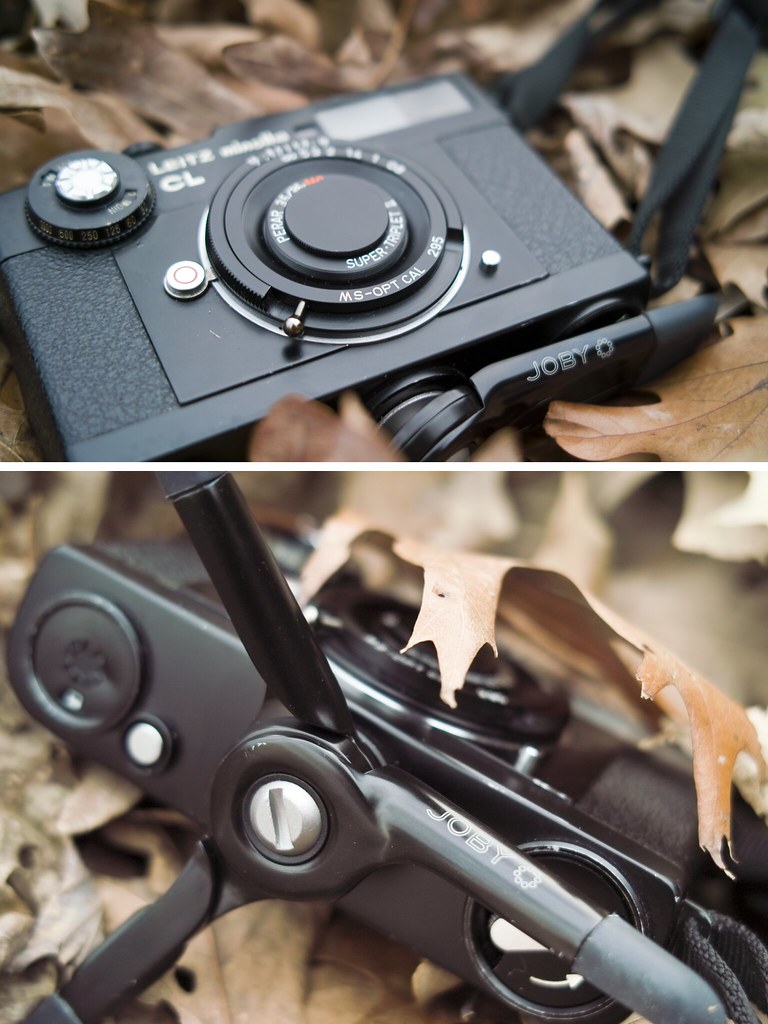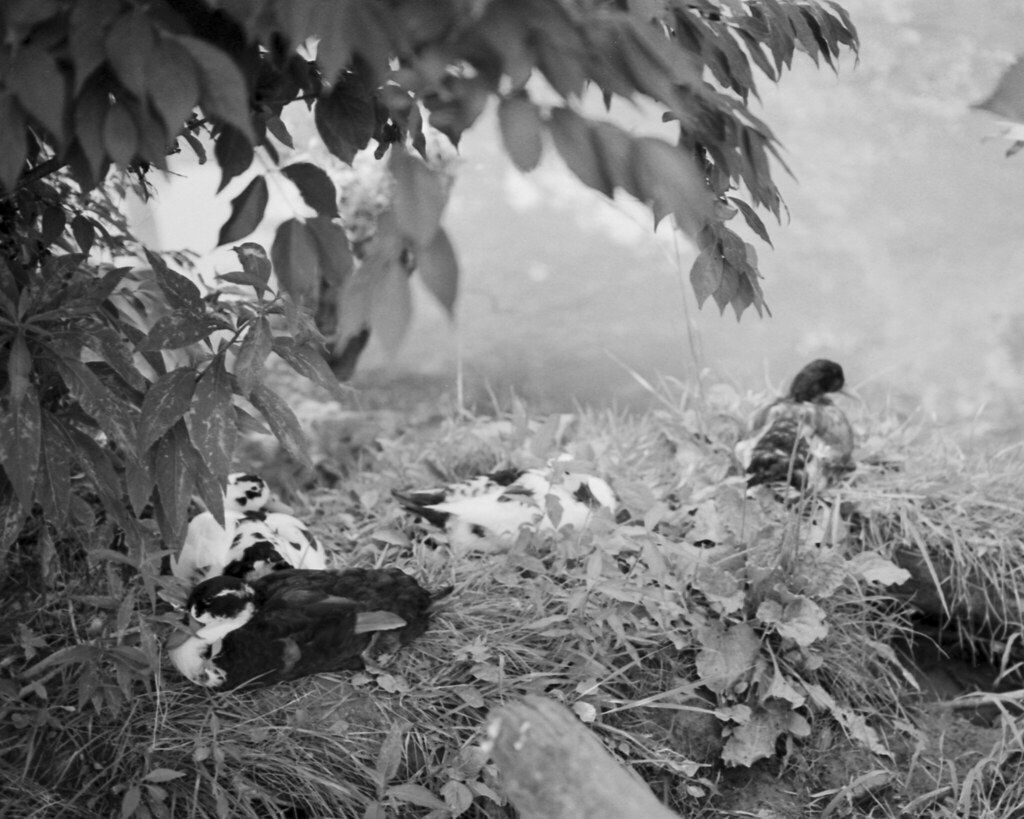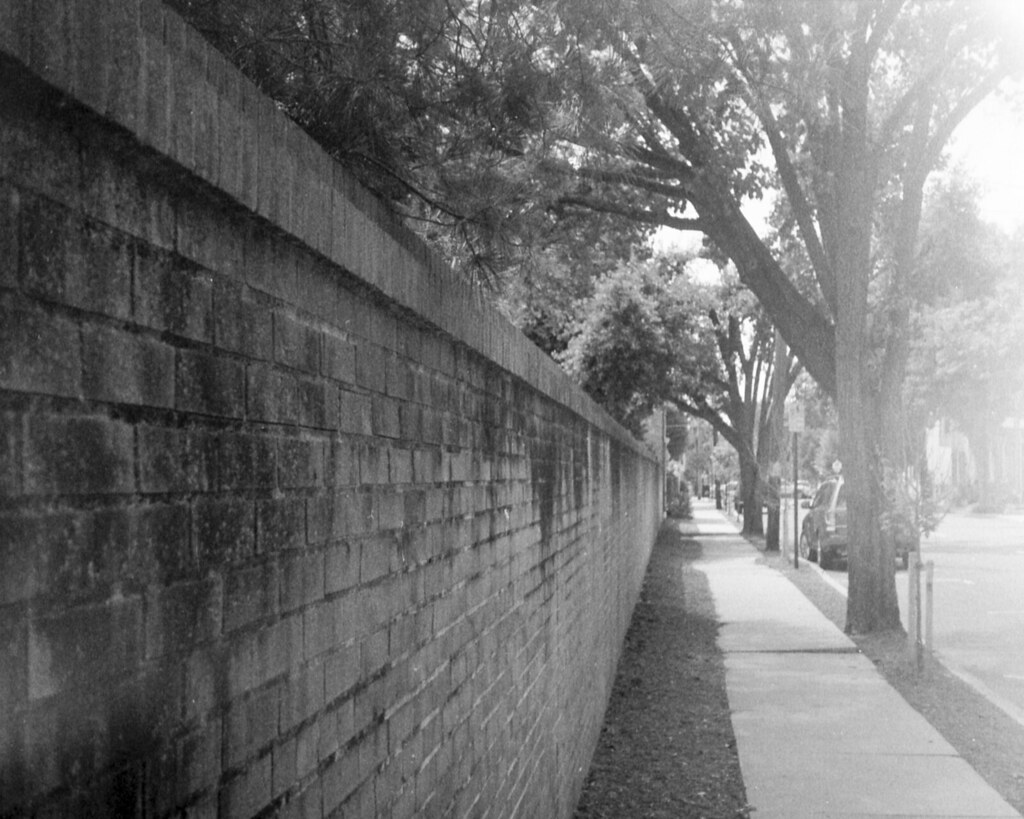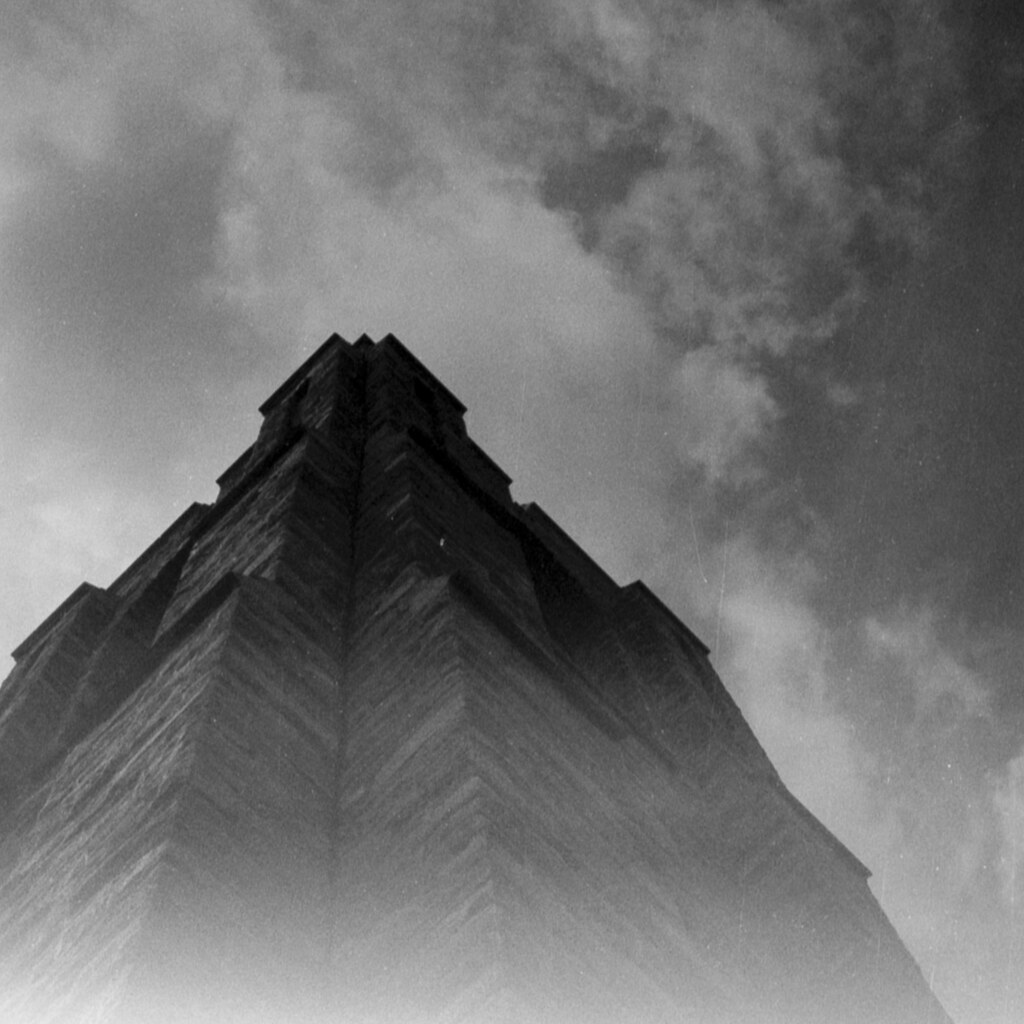Joby Gorillapod Micro 800
 This review is part of my photo reference set on Flickr. Clicking the photo above will take you to the photo page on Flickr, with additional notes on the photo itself.
This review is part of my photo reference set on Flickr. Clicking the photo above will take you to the photo page on Flickr, with additional notes on the photo itself.
I like to travel light, which often means carrying a light camera like my Leitz-Minolta CL. It also means I rarely carry a tripod, which leads to plenty of setting-the-camera-down-and-hoping-for-the-best during 30 second nighttime exposures. For such things, all the stability available to me is helpful, which does not come easy with a lightweight camera. In an effort to add stability, I recently purchased and semi-permanently attached the new Joby Gorillapod Micro 800 to my CL.
Joby makes two Gorillapod Micros — the 250 and the 800
, each named after how many grams it can support. I’m not sure why they decided to brand these as Gorillapods, bearing no resemblance to the rest of the bendy, grabby family. The basic idea behind the Micros is that you get convenient fan-open-and-shut operation, and a ball-head with 36º of rotation which allows the shut legs to sit flush with the base of the camera. When shut, the legs barely stick out, but the ball joint does give the base of the camera a curious bump. This also means if you’re generally leaving the tripod on, forget standing it up without first unfolding the legs. While this is not really an issue in and of itself (unfolding is very quick), care must be then be taken to level the camera on the ballhead.
Operation and basic functionality are great. Unfortunately, the same can’t be said for fit-and-finish and overall construction. Rather than a thumbscrew, the 800 is tightened to the camera base through use of a coin-sized slot. While this works well for some things, a coin really does not provide enough leverage to properly tighten the tripod — no matter how much I cranked down with a coin, I couldn’t get it tight to the point where trying to rotate the camera on the ball wouldn’t loosen it right off. So, I used a churchkey for extra leverage, and promptly scratched/scraped the paint off of the bottom. I don’t really mind, but the paint on the ‘pod is clearly not that tough. This thing will age quickly.
Additionally, and most concerning, there is just way too much play in the ball head for comfort. Adjusting means wiggling it to the point where it starts mocing on the ball, adjusting, and then letting it settle off the ball again. This gets frustrating quickly, and while long exposures are still easier than with nothing, stability is certainly compromised, and I must be very careful with my cable release.
Overall, the Gorillapod Micro 800 is a pretty handy piece of kit that folds flat and small, and compliments my Leitz-Minolta CL with its tiny collapsible pancake lens perfectly. Very little additional bulk, with plenty of additional utility. If Joby just got the construction quality a little bit better, this little tripod would be an essential piece of gear rather than just a handy trinket.
Cosina Voigtländer Ultron 40/2

This review is part of my photo reference set on Flickr. Clicking the photo above will take you to the photo page on Flickr, with pretty much the same review, but very detailed notes about each lens on the photo itself.
I recently picked up the Voigtländer Ultron 40/2 (seen left, above) to use as my primary lens on the Pentax MX. Smaller lens to go with a smaller body, naturally. 43mm is the standard focal length for 135 format photography — not 50mm (blame the folks in Wetzlar for that one). My favorite standard range primes have always been in 40-45mm. With this in mind, my options for a small prime were basically the Ultron, the old Pentax 40/2.8 pancake, or the Pentax Limited 43/1.9. The Limited is a beautiful lens, and I still want to get one some day, but it doesn’t seem much smaller than a normal Pentax standard, and I simply can’t afford it. The 40/2.8 pancake demands high prices, but it’s not the sharpest thing in the world… I still want to get one some day, because it’s tiny, but not until I find a good deal.

cosina voigtlander ultron 40/2, pentax mx, fuji neopan acros 100
The Ultron is larger than a pancake, but smaller than a standard Pentax prime. Feel of the focus is the best I have felt on any lens I have ever touched, hands down. Aperture is the same terrible combination of full- and half-stop clicks as a genuine Pentax lens. The aperture ring is a bit smooth, and takes some getting used to. Lens is solid and heavy; heavier than the Pentax 50/2. Image quality is excellent, the lens is insanely sharp edge-to-edge. It does exhibit more distortion than I would expect (at both the focal length and the price point), but this is generally not noticeable, and correctable in post.

cosina voigtlander ultron 40/2, pentax mx, kodak panatomic-x 32
A few final observations: The CV uses aspheric elements… I do not know if these are plastic, hybrid, or glass. I doubt glass, due to cost. I doubt plastic due to weight. So, I have to guess hybrid. CV only includes a Leica-sized lens cap, to go on the hood. This cap is incredibly thick, plus the addition of the hood, and your small lens just got considerably beefier. I use a slim Pentax (F?) edge-squeeze type cap instead. The CV has 9 curved aperture blades, which results in round bokeh at any setting. If you value sunstars over decent bokeh, I guess this lens isn’t for you — personally, I’ll take the bokeh. Speaking of bokeh, while it won’t look horrifically polygonal on this lens, it does get a little ringy and is not necessarily my favorite. Optical design is 6 elements (one aspheric) in 5 groups on the Ultron, 5 in 5 on the 50/2, 5 in 4 on the 40/2.8 pancake, and 7 in 6 on the 43/1.9 Limited.
Canon Dial 35 2

This review is part of my photo reference set on Flickr. Clicking the photo above will take you to the photo page on Flickr, with pretty much the same review, but very detailed notes about the camera on the photo itself.
This here is a Canon Dial 35 2. Mine was distributed by Bell & Howell, and is branded as a Bell & Howell Dial 35. Before the Dial 35 2, Canon released the Dial 35, which Bell & Howell branded as the Bell & Howell / Canon Dial 35. So that’s what they’re called, but what are they?
Well, they’re half-frame 135 cameras with shutter priority or metered manual operation. They have wind-up clockwork motors for film advance and rewind. Plenty of other half-frame cameras exist, but most stick to the traditional camera layout that everyone is used to. Depending on how you shoot, this is a good or a bad thing — because it means that your standard orientation is going to be portrait. The Dial 35, with its odd layout shoots landscape when oriented ‘normally,’ which is my main draw to the camera.

canon dial 35 2, ilford panf+, hc-110
The camera has decent ergonomics. Zone-focusing is achieved with a lever running along the top of the lens. Surrounding the lens is the shutter speed adjustment, with speeds from 1/30-1/250. Shutter release is on the lower right (from the user’s perspective) of the lens. Above the release is a small knob for aperture setting. Push the knob into the body, and the camera operates in Tv automatic mode. Pull it out, and turn it to adjust the aperture (f/2.8-22), metering inside the finder. Oddly, the shutter speeds are visible only outside the finder on the shutter speed dial, and aperture numbers are visible only inside the finder, with no representation on the knob itself.

canon dial 35 2, ilford panf+, hc-110
While the camera feels really solid and has decent optics, it also has one fatal flaw: the clockwork advance mechanism. I ran one roll of film through mine, and it started acting very sticky when I went to rewind it. I thought it was done, but opened the back prematurely and fogged the roll. And then, after that, the mechanism stopped working altogether. This is a common issue, and the mechanism is not simple to get to, and less simple to repair. Some people have reported success merely by slipping penetrating lubricants inside — I plan to try this, but it’s low priority. For now, I have a neat, useless camera which I at least got to shoot one roll of film through.